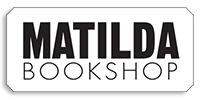|
|
Visual Methodologies: An Introduction To Researching With Visual Materials
Stock informationGeneral Fields
Special Fields
DescriptionA now classic text, the book appeals to undergraduates, postgraduates, researchers and academics in all subjects looking to understand and clearly grasp the complex debates and ideas in visual analysis and interpretation. ReviewsIf you need to carry out research into visuals then Rose's book provides straight forward practical assistance for how to do so. Along with a history of this emerging field she explains clearly how we can deal with the visual from diverse approaches such as content analysis, semiotics, psychoanalysis and discourse analysis, all explained carefully, using examples, in terms of the stages of a research project. This new edition will be key material for undergraduate studies David Machin Cardiff University Clear, comprehensive, theoretically informed, and up to date, Visual Methodologies is an excellent guide to the rapidly growing field of visual research Theo van Leeuwen University of Technology, Sydney Substantially updated to include a wide range of visual media examples, Gillian Rose's Visual Methodologies remains the authoritative introductory text on the methods of visual research. Conveying the richness and excitement of visual culture research, Rose expertly navigates across a range of methodologies, explaining in detail their particular usefulness and limitations through practical examples. For anyone already familiar with Visual Methodologies, this third edition offers a significant reworking of previous content, to include developments in the field of audience/fan cultures, digital media, ethics and image production as research practice. As such, Rose demonstrates the evolving nature of visual research and its methods, and reminds us of the passion involved in its study. It is a must buy for students and scholars alike Julie Doyle Principal Lecturer in Media Studies, University of Brighton As of its first edition Visual Methodologies established itself as one of the better books to obtain a well-balanced introductory overview of different approaches to visual analysis and each revision further adds to its quality. Rose's book is mainly (except for one chapter) focused on methodologies for analyzing 'found' or pre-existing images (as opposed to producing visual data or analyzing visual phenomena that are not images) but it does that in a very systematic and practical manner, clearly highlighting the exact modus operandi as well as the specific strengths and weaknesses of each of the methods or analytical frameworks. Of particular value is the attention devoted to mixing different methods, as far too often methods and theories are presented as distinct and even incompatible options Luc Pauwels Professor of Visual Studies, University of Antwerp An accessible text book that provides the student of visual culture necessary tools and insights on how to analyze images. The book is unique in bridging a wide range of methodologies from the humanities and the social sciences. Rose's in-depth and systematic discussion of theories and methods, as well as masterful handling of case studies and examples, will provide the reader with a valuable overview Anneke Smelik Professor of Visual Culture, Radboud University Nijmegen Gillian Rose has provided a welcome overview of the state of the field. Visual Methodologies succeeds both as an introductory text, certain to be widely adopted in the classroom, and as a sophisticated refresher course for those who have followed the rapid maturation of this remarkable interdisciplinary discourse Professor Martin Jay University of California, Berkeley Author descriptionMy research interests lie broadly within the field of visual culture. I'm interested in visuality as a kind of practice, done by human subjects in collaboration with different kinds of objects and technologies. Monica Degen, Clare Melhuish and I are starting a new ESRC-funded project in autumn 2011. Architectural atmospheres, branding and the social: the role of digital visualizing technologies in contemporary architectural practice is a two-year ethnographic study of how digital visualizing technologies are being used by architects in two large studios in London, both as part of their design process but also as a way of taking their designs through the planning process. Other work is extending my interest in subjectivities, space and visual practices by exploring experiences of designed urban spaces. I have completed the ESRC-funded project Urban aesthetics: a comparison of experiences in Milton Keynes and Bedford town centres (ESRC grant number RES-062-23-0223) with Dr Monica Degen at Brunel University, in which we compared how people experienced two rather different town centres: Milton Keynes and Bedford. Find more information about the project on the Urban Experience website. The long-term project Doing Family Photography: The Domestic, The Public and The Politics of Sentiment resulted in a book from Ashgate Press in 2010. I've approached family snaps by thinking of them as objects embedded in a wide range of practices. I've been interviewing women with young children about their photos for a long time, and more recently I've looked at the politics and ethics of family snaps moving into more public arenas of display when the people they picture are the victims of violence. The book explores the different 'politics of sentiment' in which family snaps participate in both their domestic spaces in the public space of the contemporary mass media. I'm also interested in more innovative ways to produce social science research, especially using visual materials. I was involved in organising the ESRC Seminar Series 'Visual Dialogues: New Agendas in Inequalities Research' (2010-2012). Please visit the Visual Dialogues project website for more details. I'm a member of the OpenSpace Research Centre. |
